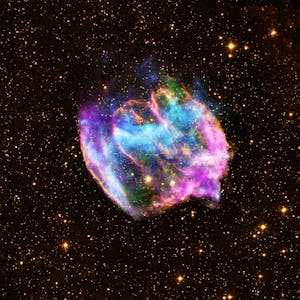Analyzing the Universe
About this Course
Using publicly available data from NASA of actual satellite observations of astronomical x-ray sources, we explore some of the mysteries of the cosmos, including neutron stars, black holes, quasars and supernovae. We will analyze energy spectra and time series data to understand how these incredible objects work. We utilize an imaging tool called DS9 to explore the amazing diversity of astronomical observations that have made x-ray astronomy one of the most active and exciting fields of scientific investigation in the past 50 years. Each week we will explore a different facet of x-ray astronomy. Beginning with an introduction to the nature of image formation, we then move on to examples of how our imaging program, DS9, can aid our understanding of real satellite data. You will using the actual data that scientists use when doing their work. Nothing is \"canned\". You will be able to appreciate the excitement that astronomers felt when they made their important discoveries concerning periodic binary x-ray sources, supernovae and their remnants, and extragalactic sources that have shaped our understanding of cosmology.Created by: Rutgers the State University of New Jersey

Related Online Courses
Once we have sequenced genomes in the previous course, we would like to compare them to determine how species have evolved and what makes them different. In the first half of the course, we will... more
This course discusses common foundational principles and practices used by agile methodologies, providing you with a flexible set of tools to use in your role (e.g. product owner, scrum master,... more
This course is a capstone assignment requiring you to apply the knowledge and skill you have learnt throughout the specialization. In this course you will choose one of the areas and complete the... more
This course will provide back test results for all the strategies in developed and emerging markets. The learner will also be taught scientific ways of back testing without succumbing to either... more
In this course, you will learn new data structures for efficiently storing and retrieving data that is structured in an ordered sequence. Such data includes an alphabetical list of names, a family... more







